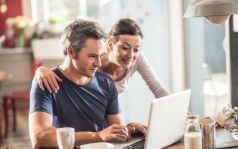5th November 2024
What You Should Know About Stereotactic Radiotherapy
Stereotactic radiotherapy is a non-surgical form of cancer treatment. It delivers a more precisely targeted radiation treatment compared to traditional therapy. During treatment, the radiotherapy beams are aimed at the tumour from many different directions around the affected area. The beams meet at the tumour, meaning only a very small area is targeted with a high dose of radiotherapy, leaving the surrounding healthy tissue mostly unaffected. The radiation damages cancer cells, so they are unable to grow or repair themselves.
There are two types of stereotactic radiotherapy, Stereotactic Body Radiation Therapy (SBRT) and Stereotactic Radiosurgery (SRS). The type of radiotherapy used will depend on the location and type of the tumour.
.jpg?sfvrsn=cf9c0e28_0)
Which types of cancer can be treated using stereotactic radiotherapy?
Stereotactic body radiation therapy (SBRT) uses advanced radiation-delivery equipment combined with imaging technology to deliver high doses of radiation with pinpoint accuracy. This therapy is most commonly used to treat certain types of lung tumours that cannot be removed safely with surgery and is also highly effective on tumours in the prostate, liver, spine, pancreas, and abdomen.
Stereotactic radiosurgery (SRS) uses highly focused, highly accurate x-ray beams to deliver a large dose of radiation in a single treatment, made possible by new imaging capabilities that allow precise and accurate set-up without the use of an invasive head frame. SRS is used to treat small brain and spinal cord tumours and certain blood vessel abnormalities.
How is stereotactic radiation therapy delivered?
Planning
Your treatment will be planned out before you begin radiotherapy. During the planning session, the radiation therapists will carry out a CT scan to visualise the internal structure of the body and tumour. You may receive several pin sized tattoos to help with treatment positioning. They do not show the location of where the treatment will be delivered.
The scan and the tattoos will act as a reference for the team to ensure you are in the same position during every session to deliver treatment accurately. Moulds and supports may be used depending on the location of the treatment area to help you remain still and comfortable during treatment.
Treatment
Based on the scans taken during the planning session, your consultant together with your care team will pinpoint the location of your treatment and decide on the level of radiation you require to create your treatment plan. This will be discussed with you prior to your first appointment.
You will be brought into the treatment room and placed in the same position you were in during the planning session. You will be monitored throughout your treatment to ensure you remain aligned in the correct way. The team will ensure that you are comfortable for the duration of the appointment.
You will be awake for the duration of the treatment. Some patients may experience slight side effects shortly after the treatment such as minor discomfort related to the positioning or fatigue.
What are the benefits of stereotactic radiotherapy?
Stereotactic radiotherapy offers several benefits for patients undergoing cancer treatment, including:
- High accuracy: stereotactic radiation delivers highly precise radiation to the targeted tumour, minimising the exposure to surrounding healthy tissue.
- Fewer treatment sessions: unlike traditional radiotherapy, which may require multiple sessions over several weeks, stereotactic radiotherapy usually requires fewer treatment sessions.
- Reduced side effects: due to higher accuracy and shorter duration of treatment, stereotactic radiotherapy oftentimes results in fewer side effects.
The above content was reviewed by Prof. Daniel Cagney, Head of Department of Radiation Oncology at Mater Private Network.







.jpg?sfvrsn=97847083_1)


.jpg?sfvrsn=1c95d47a_1)
.jpg?sfvrsn=ec7c101c_1)

